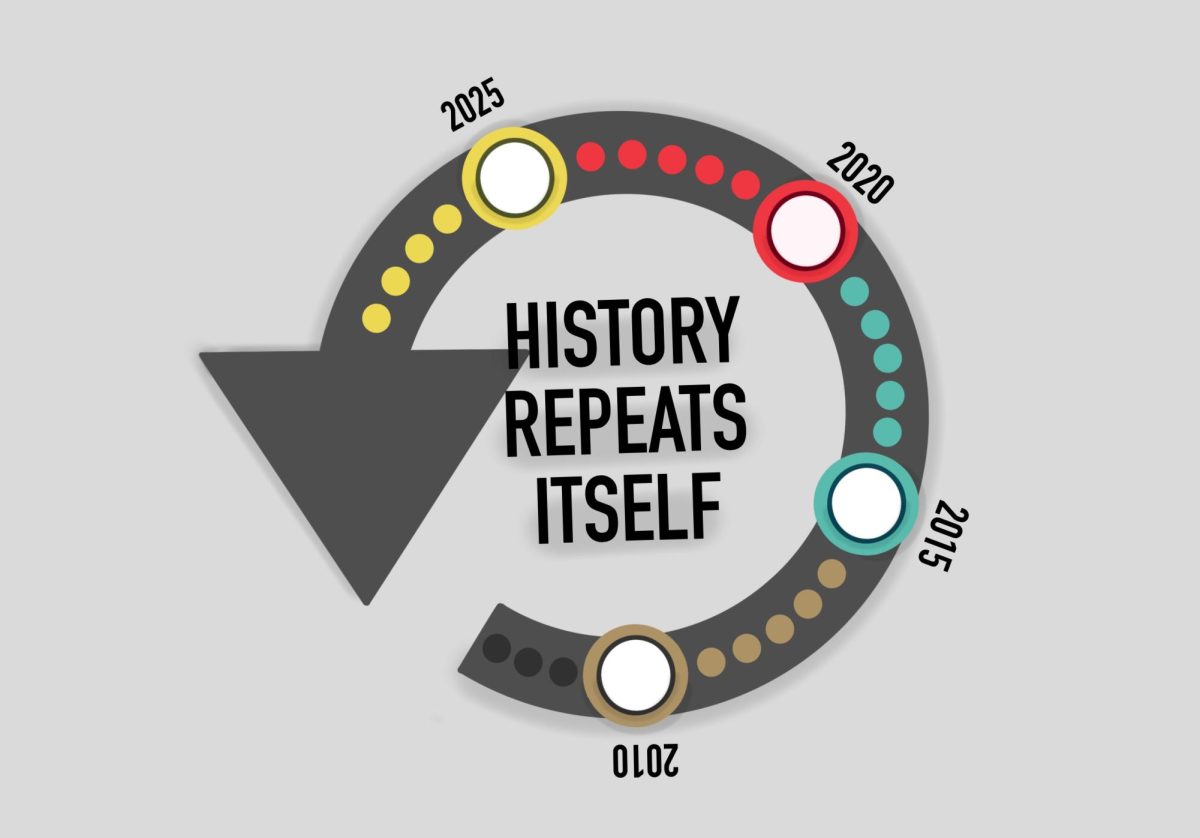On more than one occasion, I have talked with fellow college students about our job prospects, and the conversations have rarely been positive. As many of us accumulate a mountain of debt, the utility of our degrees — the job prospects directly resulting from our degrees — seem to be diminishing.
These concerns are sometimes portrayed as being completely unfounded. After all, an undergraduate diploma is a powerful ticket to more lucrative careers after graduation, at least when compared with a high school diploma. In fact, the Bureau of Labor Statistics reports that those with an undergraduate degree make 67% more money on average than their high school-educated counterparts. The same data reflects a significantly higher rate of unemployment for those lacking an undergraduate degree. This suggests that graduates are invariably better off than non-college graduates.
However, that is only one part of the picture. Despite being a key to greater financial success, the purchasing power of the undergraduate degree has come under suspicion in the last decade. According to Peter Capelli, a professor at the Wharton School of Business at the University of Pennsylvania, in 2015 degrees from about a quarter of colleges in the U.S. earned a negative rate of return. In other words, these degrees were bad investments that never fully paid off. Although college graduates earn more than high school graduates, they do not necessarily make enough to justify going to college for the sole purpose of making money after graduation.
In the search to remedy these findings, much attention has already been given to the increasing cost of U.S. higher education. The average cost of tuition has skyrocketed since the 1970s at both public and private institutions, shooting from $323 to $7,411 and $1,533 to $32,417, respectively. One dollar in 1970 had the purchasing power equivalent to $7.07 today. This means that for tuition to cost the same as it did in 1970, it should be an average of $10,838 at private institutions and $2,238 at public ones. This increase in tuition cost has come under fire and is considered one of the main causes of the ballooning of U.S. student debt. U.S. News reports student debt is currently $30,000 per student on average, creating a deep hole for college graduates to climb themselves out of after school.
The damage done in part by such high prices for college tuition is exacerbated by a phenomenon known as “degree inflation.” While the number of people earning an undergraduate degree each year has tripled since 1970, the actual population has only grown by about half that in the same period of time. The percentage of people with undergraduate degrees has grown steadily, flooding the job market with college educated, “high-skill” workers. The market, however, did not keep up by producing a high enough percentage of jobs that actually required these degrees. As a result, more college educated job-seekers are forced to look to “middle-skill” jobs, which traditionally did not (and in reality still do not) require their college credentials. The higher cost of college tuition is thus even harder to pay because these middle-skill jobs that many recent graduates are forced into usually pay less than high-skill jobs.
The question of whether or not the college degree is worth it hinges on how much it costs the student and how much it can benefit the student. The current discussion surrounding student debt forgiveness or cancellation as well as the push to make public colleges free certainly addresses the cost factor. It solves the problem of non-graduates making less money by simply saying that everyone should be able to pay for college. But making college financially accessible does not mean everyone will actually be able to take classes. College takes time and effort that some people (due to their financial situations or something else) simply cannot expend. Even completely free college does not give everyone equal access to a degree.
In addition to making college more accessible, we need to make sure that people without college degrees can still get hired at jobs that used to be available to them. The flood of college degrees has pushed college educated job seekers to apply for mid-skill level jobs. These jobs are believed to require a high school degree, but not necessarily a college degree. Still, in response to the influx of educated individuals, many of these jobs (over 60% according to a 2019 Harvard Business School Study) have imposed some form of diploma requirement to weed out applicants, because they guarantee certain basic competencies (reading, writing, ability to work on deadlines). This intrusion of college graduates has thus pushed those who cannot get a degree even further down the totem pole.
Frederick Hess, senior fellow at the American Enterprise Institute suggested in 2018 that the diploma requirement may in fact be illegal under the Civil Rights Act of 1964. The act essentially bars employers from making applicant requirements that have a disparate impact on minority groups without demonstrating why said requirement is necessary for the job. Hess argues that because Black and Hispanic populations currently have significantly lower graduation rates than other racial groups, they are disparately impacted by the requirements. Further, because justification for the necessity of a diploma is tenuous at best for most of these jobs (service industry, office managers, etc.), Hess may have a point.
We need to make sure that people who choose not to, or are unable to, go to college still have paths to at least the middle class. As long as employers at mid-level jobs are allowed to require diplomas without good reason, non-college graduates will continue to be forced into lower-skill jobs. Abolishing this unnecessary requirement allows many to skip college and still make a decent living for themselves while forgoing expenses or lost time spent at college getting a degree they are not passionate about in the first place.
Whether you are lucky enough to go to college or not, and whether you go as an investment in your future financial success or not, we need to understand the utility of our college degree. Making college a financial possibility for a larger group of Americans is a start, but as long as college takes time and effort, some people will be left behind. As long as lack of college education precludes the attainment of classically middle class jobs, more people will go to college simply to make more (though not enough) money, making an investment that may never give them real returns.
Higher education is an amazing opportunity and a blessing to be thankful for every day. That said, people should not be forced into it to get a mid-skill level job that does not require any skills learned in college, and people who do choose to further their education should be able to get jobs that value their skill set.















UMN0001
Oct 26, 2021 at 8:59 am
I am more interested in the specific “college” or program rate of return across the US. This information should be available to students before they pick their major so they understand the long-term cost implications.